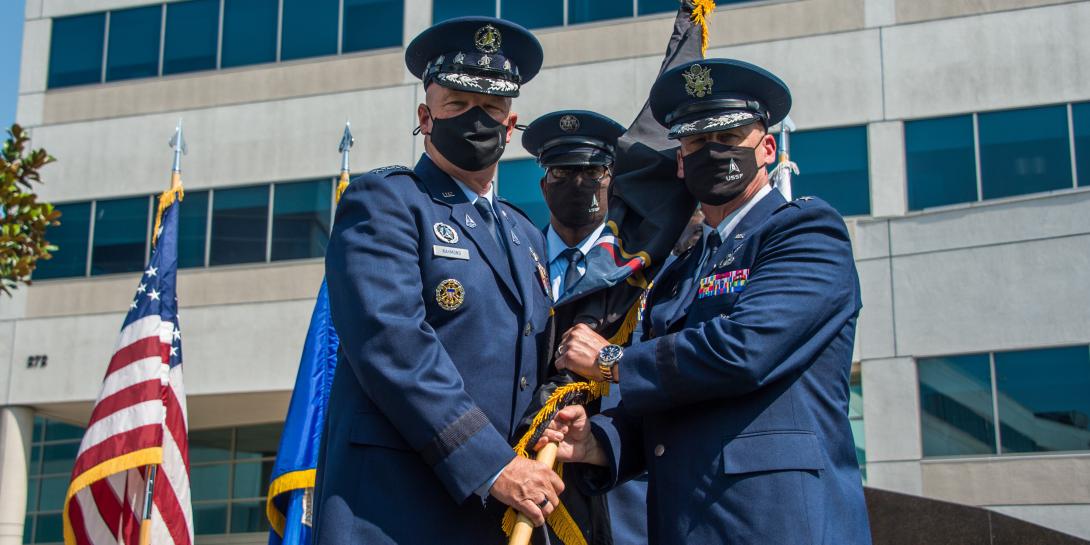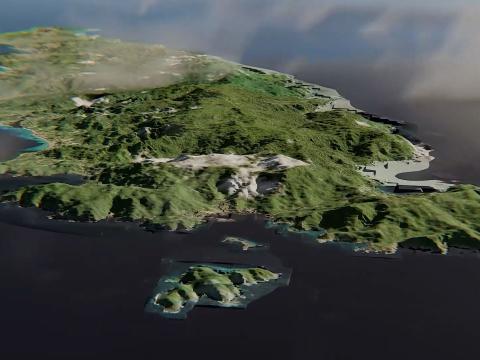Commander Sets the Initial Course for Space Systems Command
The commander of the U.S. Space Force’s new Space Systems Command, or SSC, is prioritizing the budgetary funding, technology preparations and partnerships as a few of his early goals. Lt. Gen. Michael Guetlein, USSF, set the stage for the SSC’s future during the U.S. Space Force’s official stand up of the new field command last week. The command—which was redesignated from the U.S. Air Force’s Space and Missile Systems Center (SMC) last Friday but still will be headquartered at the Los Angeles Air Force Base, California—will build on the success of the SMC 2.0 architecture, created by the previous organization, led by Lt. Gen. John Thompson, USAF, now retired. Gen. Guetlein plans further changes and improvements to SMC 2.0.
“Four years ago, Gen. Thompson set the center on a journey to change the way we acquired warfighting capabilities for space,” Gen. Guetlein explained. “Under his leadership, the center took outdated processes and turned them on their head, pushed down authority and autonomy at unprecedented rates and paved the way for Space Systems Command. We owe him a debt of gratitude for his tireless leadership and bold visions.”
The new SSC will advance beyond the existing SMC 2.0 and its principles of a flat organizational structure, delegation of authorities and an enterprise life-cycle focus, “all of which will be iterated upon and improved upon under Space Systems Command,” the new commander promised.
“As we transition into this new structure in this field command, we will be utilizing new tools, processes and authorities to enable better communication and faster execution across the enterprise, enabling us to move with agility and speed into the future,” he said. “There have been a lot of improvements made over the past several years, but there is still a long way to go. We must outpace the threat, we need more urgency, more critical thought, more innovation and more affordability.”
As for his other initial goals and priorities, Gen. Guetlein said that he will be focusing on the budget over the next few months, working to ensure “our national leadership understands the bold steps we must take. The SSC must be postured and empowered to keep pace with this change. We must protect the architecture we have today while continuing to shift to a more resilient architecture that is designed for the contestant space domain. This must be our number one priority.”
The commander will then examine the SSC’s preparations needed for a contested domain, including technology integration, network architecture and digital engineering capabilities. He cited the need to lean on the service’s proposed Space Warfighting Analysis Center for key inputs.
“In the coming years, we will need an integrated and network architecture that is informed by the force design efforts of the Space Warfighting Analysis Center and underpinned by the systems of systems engineering of Space Systems Command,” he emphasized. “Our skilled and empowered PEOs [Program Executive Officers] will leverage digital engineering to execute and deliver the space architecture of the future.”
Additionally, the new command will look to field more commercial-ready solutions from the private sector as opposed to obtaining expensive, exquisite, custom capabilities. “[We will] highly leverage the explosion of innovation that continues to occur across the commercial space sector,” he stated, noting that the SSC will look to adopt “a buy-before-we-build approach.”
To accomplish its goals, the SSC “will require an unprecedented unity of effort through partnerships,” Gen. Guetlein continued. “Partnerships with industry and academia, partnerships with other acquisition organizations like [the Department of the Air Force Rapid Capabilities Office (RCO)], the Space RCO, Space Development Agency, National Reconnaissance Office and Missile Defense Agency, to name a few.”
The SSC also will turn to federally funded research and development centers, or FFRDCs, such as The MITRE Corporation, Aerospace Corporation, Massachusetts Institute of Technology Lincoln Laboratories, Rand Corporation, Jet Propulsion Laboratory and others, the general offered.
“To be frank, I will expect nothing less than world class innovation and leadership moving forward,” he noted.
You may also be interested in:
The Space Force Officially Stands Up the Space Systems Command
U.S. Space Force to Welcome This Week First Round of Guardians from Sister Services





Comments